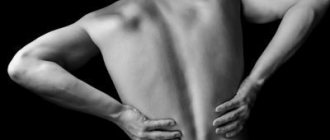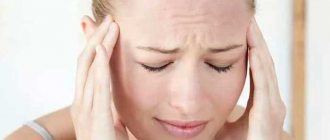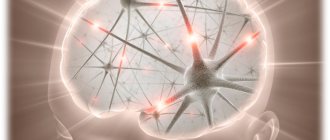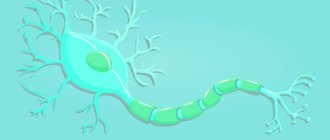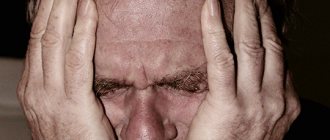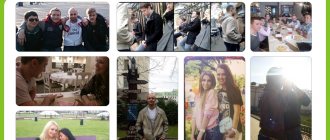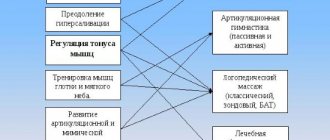How to quickly relieve neuromuscular tension and get complete relaxation
The emotional and physical state of a person are closely related.
The American physician Edmund Jacobson studied this connection in the 1920s. His experiments showed that human emotional reactions often manifest themselves in the form of muscle tension, the degree of which increases as the emotional tension increases. To solve this problem, Jacobson developed a technique of progressive neuromuscular relaxation, which allows you to relax the body and mind, restore strength and neutralize the negative effects of stress. Today estet-portal.com will introduce you to this technique.
What is neuromuscular relaxation technique?
Progressive neuromuscular relaxation is a two-step process aimed at relaxing muscles. First, you systematically tense certain muscle groups in the body, and then release the tension.
This exercise will help you reduce your overall level of tension and stress, as well as relax in a stressful situation, improve sleep, and even get rid of physical discomfort caused by headaches or stomach pain.
Thanks to the Jacobson technique, you will learn not only to relax, but also to recognize the first signs of tension that arise throughout the day.
Jacobson's method exercises will help you relax, relieve stress and improve your health.
Below estet-portal.com will tell you:
- how to prepare for class;
- what to do during the session;
- how often should you exercise.
The entire process of neuromuscular relaxation according to Jacobson will take about 15–20 minutes, so allocate this amount of time for relaxation. It is better to practice this technique in a warm and quiet place where no one will disturb you.
Don't forget to turn off your phone. Make yourself comfortable: lie on the floor or on the bed, sit on a chair - whatever you prefer. Relax your body, breathe slowly.
You can do these steps alone, but you can ask a friend or family member to read the instructions for you.
Your task is to alternately tense and relax different muscle groups in the body. Below are instructions for performing neuromuscular relaxation exercises.
The scheme is simple: You will first need to tense your muscles for 5 seconds and then relax them, while enjoying the feeling of complete relaxation. While doing the exercises, do not hold your breath, breathe freely and evenly.
Regulate the degree of tension - it should not cause pain.
Tension should not cause pain.
- Hand and forearm (dominant hand): Make a fist as hard as possible, bend your arm at the wrist. Count to 5. Relax your muscles and enjoy the feeling of relaxation.
- Shoulder (dominant arm): Bend your elbow and press it onto any surface. Count to 5. Relax your muscles and enjoy the feeling of relaxation.
- Hand and forearm (non-dominant hand): see point 1.
- Shoulder (non-dominant arm): see point 2.
- Upper third of face: Raise your eyebrows as high as possible and open your mouth wide. Count to 5. Relax your muscles and enjoy the feeling of relaxation.
- Middle third of face: Close your eyes tightly, frown and wrinkle your nose. Count to 5. Relax your muscles and enjoy the feeling of relaxation.
- Lower third of face: Clench your jaw forcefully and move the corners of your mouth as close to your ears as possible. Count to 5. Relax your muscles and enjoy the feeling of relaxation.
- Neck: Pull your shoulders toward your ears and then tilt your chin toward your chest. Count to 5. Relax your muscles and enjoy the feeling of relaxation.
- Chest and Diaphragm: Inhale deeply, bring your elbows in front of you and squeeze them. Count to 5. Relax your muscles and enjoy the feeling of relaxation.
- Back and stomach: Tighten your abdominal muscles, squeeze your shoulder blades together and arch your back. Count to 5. Relax your muscles and enjoy the feeling of relaxation.
- Thigh (dominant leg): Hold the leg in a tense position - half bent at the knee. Count to 5. Relax your muscles and enjoy the feeling of relaxation.
- Lower leg (dominant leg): Pull your foot towards you as much as possible, spread your toes out to the sides. Count to 5. Relax your muscles and enjoy the feeling of relaxation.
- Foot (dominant leg): Arch your foot so that your ankle joint protrudes, squeezing your toes. Count to 5. Relax your muscles and enjoy the feeling of relaxation.
- Thigh (non-dominant leg): see point 11.
- Lower leg (non-dominant leg): see point 12.
- Foot (non-dominant leg): see point 13.
Working with the above 16 muscle groups is quite enough to relieve muscle and mental tension, however, there are more detailed relaxation techniques, which you can move on to after learning how to perform basic exercises.
When is the best time to perform Jacobson's neuromuscular relaxation exercises?
It is worth noting that the generalization of the relaxation effect depends on the regularity of performing exercises according to the Jacobson method of progressive neuromuscular relaxation.
During the first two months, it is recommended to practice the method every day: in the first month - 2 times a day, in the second - 1 time a day.
After this, you can gradually reduce the frequency of classes to a couple of times a week.
It is best to practice after waking up, before bed and before meals. It is not advisable to exercise after eating, since the digestive process prevents complete relaxation.
Source: https://estet-portal.com/statyi/nervno-myshechnaya-relaksatsiya
Relaxation | Knowledge base
Relaxation, myorelaxation (from the Latin relaxatio - weakening, relaxation) - a decrease in the tone of skeletal muscles. Relaxation can be achieved through the use of special psychophysiological techniques, physiotherapy and medications.
It is believed that relaxation helps relieve mental stress, which is why it is widely used in psychotherapy, hypnosis and self-hypnosis, yoga and many other health systems.
Relaxation, along with meditation, has gained great popularity as a means of combating stress and psychosomatic diseases.
Relaxation is especially effective for people with increased muscle tone. It has been proven that increased muscle tone leads to the development of diseases. For people with reduced muscle tone, the relaxation effect will be less. A sharp or progressive decrease or increase in muscle tone may be the result of illness.
Relaxation in psychotherapy
The benefits of systematic relaxation sessions are recognized in modern psychotherapy. The theory of the positive impact of relaxation on the psyche is based on the statement about the relationship between the mind and body.
It is known that in a person under stress, muscle tone increases. It is assumed that there is also a feedback relationship: as muscle tone decreases, mental stress also decreases.
In this case, mental stress can be reduced by deep muscle relaxation.
The most important concept when practicing relaxation for psychotherapeutic purposes is generalization, that is, the spread and consolidation of the relaxation effect. Unsystematic and superficial relaxation exercises give a temporary, incomplete effect. Only regular exercises in compliance with the methodology lead to persistent generalization of the effect and long-term positive influence of relaxation.
Psychophysiological relaxation techniques
Psychophysiological relaxation techniques refer to methods of relaxing muscles through the mind and exercise.
To use these techniques, comfortable conditions are important: absence of bright light, comfortable temperature, non-constricting clothing, absence of disturbing noises and other irritants.
It is not advisable to practice relaxation on a full stomach, as the digestion process interferes with relaxation.
Progressive muscle relaxation
This effective relaxation technique was developed by American scientist and physician Edmund Jacobson in the 1920s. The technique is based on a simple physiological fact: after a period of strong tension, any muscle automatically relaxes deeply.
Therefore, in order to achieve deep relaxation of all skeletal muscles, you need to strongly tense all these muscles simultaneously or sequentially. Dr. Jacobson and his followers recommend tensing each muscle as much as possible for 5-10 seconds, and then focusing on the feeling of relaxation that arises in it for 15-20 seconds.
It is important to first learn to recognize the feeling of tension and then distinguish from it the feeling of relaxation.
Jacobson initially developed about 200 special exercises to tense all skeletal muscles of the body, including the smallest ones. But in modern psychotherapy it is considered sufficient to consistently exercise 16 muscle groups in this way:
- Dominant hand and forearm (clench your fist as hard as possible and bend your wrist in any direction).
- Dominant shoulder (bend your arm at the elbow and press your elbow firmly into your body or onto the nearest surface - bed, armrest, etc.).
- Non-dominant hand and forearm.
- Non-dominant shoulder.
- Muscles of the upper third of the face (raise your eyebrows as high as possible and open your mouth wide).
- Muscles of the middle third of the face (close your eyes tightly, frown and wrinkle your nose).
- Muscles of the lower third of the face (clench your jaw tightly and move the corners of your mouth back towards your ears)
- Neck muscles (pull your shoulder joints high to your ears and in this position tilt your chin to your chest)
- Chest muscles and diaphragm (take a deep breath, hold your breath, bring your elbows in front of you and squeeze them)
- Back and abdominal muscles (tighten your abdominal muscles, squeeze your shoulder blades together and arch your back)
- Hip dominant (tighten the front and back of your thigh, keeping your knee in a tight, bent position)
- Dominant shin (pull your foot towards you as much as possible and straighten your toes)
- Dominant foot (extend your ankle and flex your toes)
- Non-dominant hip
- Non-dominant lower leg
- Non-dominant foot
The word “dominant” means right for right-handed people and left for left-handed people.
Of course, there are more detailed methods of progressive relaxation (for 30, 40 muscle groups, and more) for those who want to achieve a high degree of mastery in relaxation.
For the first two months, Dr. Jacobson recommended exercising daily, then gradually reducing the frequency to 2 times a week. In the first month, it was recommended to exercise 2 times a day for 20-30 minutes. In the second month, once a day for 20 minutes. Then 10-15 minutes.
Once you reach a certain level of mastery, Jacobson recommended learning to induce relaxation simply by imagining the feeling of relaxation in a certain muscle, without tension.
Abdominal breathing
This method is considered one of the simplest. It is also called "diaphragmatic breathing." The method involves 1-3 approaches (with breaks) of 10 respiratory cycles (inhalations-exhalations), performed as follows:
- Inhale slowly through your nose. When inhaling, you should try to make your stomach “swell” as much as possible, and your chest not swell as much.
- Hold your breath for a few seconds.
- Exhale slowly, preferably through the mouth. The exhalation should be longer than the inhalation. When exhaling, all the air must be completely expelled from the lungs, for which a slight effort must be made at the end of the exhalation.
When you inhale deeply, your stomach rises because the diaphragm, the main breathing muscle, drops very low, as if “inflating” the abdominal area. It is the low descent of the diaphragm that is the main indicator of the completeness of inspiration, that is, the complete filling of the lungs with air. And a complete exhalation ensures complete renewal of air in the lungs, which does not happen with shallow breathing.
This exercise promotes good oxygen saturation of the blood and, with long-term practice, helps develop correct everyday breathing. The technique also helps with emphysema.
The method can be combined with self-hypnosis, saying a key word with each exhalation, for example: “relaxation”, “calmness”, “serenity”, etc.
Self-hypnosis (self-hypnosis)
In self-hypnosis, relaxation can be achieved by repeatedly repeating a suggestive phrase, for example: “My left hand is completely relaxed.”
Similar suggestive phrases are composed and repeated sequentially for all parts of the body. Self-hypnosis is best performed with your eyes closed.
Achieving deep relaxation usually requires extensive practice. One of the pioneers in this field was Emile Coue.
Medicinal relaxation
Relaxation can be achieved through the use of special medications - muscle relaxants. Medicinal relaxation is used before surgery, for illnesses and injuries. Muscle relaxation is also a side effect of some other groups of drugs.
Physiotherapy
Warm baths and gentle massage promote muscle relaxation.
Literature
- Ebert, D. Stress and relaxation // Ebert, D. Physiological aspects of yoga / Trans. with him. R. S. Minvaleeva. - Leipzig: Veb Georg Thieme, 1999. - 166 pp.: ill. —ISBN 5-85663-059-3 (erroneous). - Ch. 5.4.3.
Source: https://psyweb.global/database/knowledge/article-59-relaksaciya
Psychological relaxation techniques
Man does not live by movement alone. In addition to the body, there is also the psyche, which you also need to be able to relax. And this is where problems begin for many, because it is one thing to do physical exercise, and quite another thing to relieve stress from the soul. How can you help yourself?
Meditation is the first thing a person thinks about when he wants to relax his soul and body. There are two main directions: receptive with an emphasis on perception and concentrative with an emphasis on concentration. You can use the one that is closer to you. By the way, there is a very common myth that you need to devote a lot of time to meditation. This is not so: for a modern working person, always busy with various things, ten to fifteen minutes is enough to feel the relaxation of the body and learn to live “here and now” and not “there and then.”
There are many different forms of meditation. For example, there is a technique traditional for Buddhism called “mindfulness meditation.” Initially, the person is asked to focus on some subtle sensation, for example, the flow of air passing through the nostrils during inhalation and exhalation. Gradually, the objects for meditation change - in general, they can be anything, for example, a candle flame, the sound of breathing or a heartbeat. The pinnacle of mastery is the ability to focus on the absence of thoughts: the sense of one’s own “I” almost completely disappears, resulting in a state of complete peace. You can also concentrate on a mantra - a sound or word that is repeated mentally or out loud by the meditator. Whichever option you choose can be beneficial and effective for you, as long as your meditation sessions are regular.
However, it is not necessary to set aside a specific time and place for meditation. You can practice relaxation in everyday life: this requires careful attention to what you do and what happens to you. The key here is awareness, that is, being focused and completely open to the perception of what you are in contact with here and now. For example, now you are looking at your laptop screen, you see black letters on a white background, a light bulb is shining above you, the hum of cars is coming from somewhere on the street, and there is a quiet growling in your stomach.
This does not mean prohibiting thoughts about the future or the past, but they must be connected with the present. If you're thinking about an exam, focus on how the thought makes you feel: fear, anxiety, interest, or something else. It is the inability to live “here and now” that causes a feeling of constant anxiety and tension: at work you think about household chores, at home about work, and you have no time to relax. Thus, authentic life is replaced by something similar to survival and existence.
A more psychologized version of meditation is visualization - focusing on an image, usually a pleasant one. Take a comfortable position: sit or lie down so that you can comfortably spend at least five minutes in this position. Turn on beautiful relaxing music and start visualizing.
Imagine a golden ball that is filled with warm and beautiful light. Every time he appears, your tension and anxiety disappear. Harmony and warmth spread throughout the body. This ball rises from the bottom up, starting from the legs and ending with the torso. Then it goes down to the fingers along the entire hand, after which it rises to the neck and enters the head. If you feel an increase in anxiety or tension, just send a golden ball there and they will go away.
Your body will be completely relaxed. Stay in this state for some time. When you need to come out of it, simply inhale three times and absorb the energy and fresh life that was inside your body along with the ball. Regular repetition of this exercise can work wonders, because by contacting something pleasant, we gain positive energy and resources, so necessary for complete relaxation.
Neuromuscular relaxation techniques
Many people constantly experience physical and mental stress. They get so used to this condition that they stop noticing it. However, prolonged exposure to tension is harmful to the body. Tight muscles lead to poor circulation, which affects the internal organs and systems of the body.
A person quickly gets tired, becomes irritable, absent-minded, does not get enough sleep, his nerves are constantly tense, and rest does not bring the desired relaxation. To prevent this condition, doctors recommend mastering simple relaxation techniques and performing them regularly.
One of the well-known methods is the method of neuromuscular relaxation.
What is neuromuscular relaxation?
In 1922, the American neurologist E. Jacobson introduced the concept of neuromuscular relaxation into psychology.
Neuromuscular relaxation is a method of relieving tension by alternately contracting and relaxing muscles.
The principle of operation of the method is based on the process of natural self-regulation. Observing his patients, E. Jacobson noticed that a person under stress, in addition to negative emotions, also experiences muscle tension. But positive emotions, on the contrary, cause muscle relaxation.
The neuromuscular relaxation technique includes a set of simple exercises that anyone can master. It is best to perform exercises in the evening to relax the body and prepare it for a night's rest. You can do gymnastics during the day, during a work break. It will help you quickly relieve tension and recharge your batteries.
Regular use of neuromuscular relaxation techniques improves overall well-being, relieves chronic fatigue, helps fight stress, increases body tone, improves a person’s emotional state, and strengthens the nervous system.
The technique developed by the Czech doctor Ota Gregor is well suited for independent use. Let's look at it in more detail.
Physical relaxation methods
Relaxing the body is the most famous and ancient way to calm down. And this is no coincidence, because many centuries ago the common truth about the connection between soul and body was known. We get used to existing in the “tense and confused bundle of nerves” mode - this is how clamps are formed. What needs to be done in order to get rid of them?
Yoga is a great way to remove tension from your body. Have you seen Indian sages? At least in the picture? They come across as very relaxed people, all thanks to yoga and meditation. We will talk about the latter a little further, but for now read how to achieve harmony with the help of simple yoga exercises - they are also commonly called asanas. After performing them, you will feel lightness and a healing effect on the entire body.
The most effective pose is the dead pose, or savasana. To enter it, lie on your back with your arms extended along your torso and your legs together. Relax your entire body so that your toes and heels are apart and your hands fall with the ribs of your palms down. This is the starting position. Start by feeling your right hand: how it lies on the hard floor and presses on it. This sensation usually results in tingling or throbbing. Then do the same with the left hand.
Next, spread the weight to all your hands - feel them at the same time. After this, relax your left and right legs. It is somewhat more difficult to relax the feet: it is better to do this not individually (by fingers - as is the case with the hand), but as a whole. First, fill one leg with heaviness and warmth, then the other, then them together, and then feel both your arms and legs.
Next, relax your buttocks, stomach, back and chest. You can use images of a hard floor underneath and a hot body pressing on it from above. As soon as a new relaxed body part is added, check it completely. Then feel the neck, chewing muscles and tongue. The latter, by the way, may even fall down helplessly. Don't forget to relax your face, because it is the focus of all energy. The image of your muscles being filled with hot liquid will probably come in handy. It is better to feel your forehead cool.
This is the basic relaxation technique of Hatha Yoga. We recommend performing savasana in a quiet place, characterized by silence and the absence of bright sources of light. In general, this pose takes about ten minutes, it is better to practice it every day and more than once. It is important to keep yourself conscious during the exercise, although sleep is not prohibited. You should come out of shavasana by stretching and slowly moving your limbs.
Yoga is effective if you want to achieve relaxation in your body through regular practice. However, there are situations that can only be called stressful. Relaxation at these moments can be achieved only by throwing out accumulated aggression and negative energy somewhere from the body. This is facilitated by intense physical activity, such as running or even kickboxing. It will be great if you do something similar under the guidance of an experienced trainer. Or you can just go dancing - then relaxation coupled with a dose of positive emotions is guaranteed!
